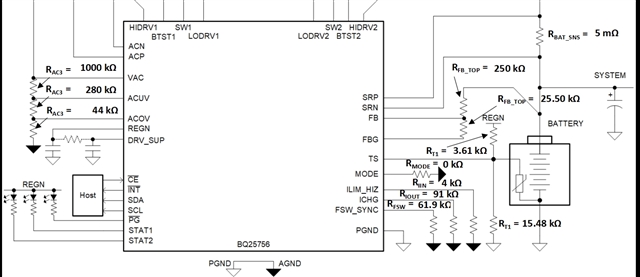Hello TI team,
Recently, I have been using the resistance-programmed BQ25756E as the output for the wireless power transmission (WPT) module. At the beginning, the initial power I input to the BQ25756E was lower than the normal working input power of the resistance-programmed BQ25756E during the constant current charging stage, and I gradually increased the input power value However, I found that at this time, the input terminal voltage of the BQ25756E was limited to 5V (the minimum input voltage I set). When I increased the power, this voltage remained unchanged, only the current rose, and the BQ25756E displayed off before the input power reached the normal working power. I have the following questions about this:
1.When I test the WPT module alone, both the output current and voltage increase. Why, after connecting the BQ25756E, does the voltage not rise but only the current when I increase the power?
2.What are the automatic shut-off conditions for BQ25756E? Is it based on voltage detection or current detection?
3. If I limit the minimum input voltage of the BQ25756E to a higher value (for example, 9V), will the BQ25756E always clamp the input voltage at 9V?
Thanks in advance!


